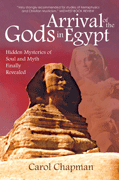0
If you’re in one of those stuck or bewildered emotional places where you need some inspiration and encouragement, this is a great article. It’s from Alex Mandossian. I thought he was mainly known as a speaker, but his web site says he provides marketing know-how for information publishers, owners of small businesses and entrepreneurs.
Biographer Dr. Gene Landrum reports, “Creative geniuses (like Walt Disney) never give up and therefore seldom succumb to the vagaries of change and innovation.”
Story: When Disney drew the first Mortimer Mouse (later Mickey Mouse) many of his associates, including his brother, Roy, laughed at his creation.
His colleagues and critics did the same for The Three Little Pigs and Snow White and the Seven Dwarfs. Both animated productions were labeled “Disney’s Folly.”
Walt’s Disneyland idea (now acknowledged as ”The Happiest Place On Earth”) was ridiculed as a “carny” idea from a man with a “Barnum and Bailey” mentality.
But Disney never allowed expert opinion or adversity to halt him from creating what he recognized as unique and innovative children’s entertainment.
It was his tenacity as an Entrepreneurial CEO that enabled him to protect his ideas and confidence to consequently build the world’s most famous animation empire and amusement park!
Alex Mandossian’s Blog » TENACITY SPOTLIGHT: Walter Elias Disney#comment-17067
I especially like knowing that Disney launched his ideas, for example, Mortimer Mouse, before he was sure the idea was right. The name “Mortimer,” as the excerpt above states, must not have brought the results Disney wanted because he later changed the name to that of the very famous and beloved Mickey Mouse.
Right now, I’m in the process of reworking the title of my latest book, You Are Blessed, because the present title is not working. Me and Walt, together. It feels good to know I’m not the only one. I am encouraged.
I hope the article encourages you too.
Wishing you happiness and success,
Carol Chapman
Copyright 2008 Carol Chapman
Continue reading

